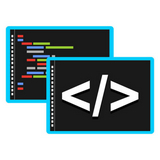
本文深入探讨了go语言中goroutine与channel协作时可能遇到的死锁问题。通过分析一个典型的“工作者”模式示例,揭示了未正确关闭channel是导致死锁的常见原因。文章详细阐述了channel关闭机制及其对接收操作的影响,并提供了基于close()函数的解决方案。此外,还介绍了使用for range遍历channel和sync.waitgroup等go语言最佳实践,以构建更健健壮、高效的并发程序。
在Go语言中,Goroutine和Channel是实现并发的核心原语。它们提供了一种安全、高效地进行数据通信和同步的方式。然而,不恰当的使用方式也可能导致程序陷入死锁,即所有Goroutine都在等待某个事件发生而该事件永远不会发生的状态。本文将通过一个实际案例,深入剖析Go并发编程中的死锁问题及其解决方案。
考虑一个常见的“工作者”模式:一个主Goroutine负责将任务放入队列(Channel),多个工作Goroutine从队列中取出任务并处理。当任务全部处理完毕后,主Goroutine需要等待所有工作Goroutine完成。
以下是原始代码片段,它试图实现这样一个系统,但最终导致了死锁:
package main
import (
"fmt"
"sync" // 引入sync包,用于后续的WaitGroup示例
"time" // 引入time包,用于模拟工作耗时
)
// entry 模拟任务结构
type entry struct {
name string
}
// myQueue 模拟任务池
type myQueue struct {
pool []*entry
maxConcurrent int
}
// process 函数:工作Goroutine,从queue中接收任务并处理
func process(queue chan *entry, waiters chan bool) {
for {
// 从queue中接收任务
entry, ok := <-queue
// 如果channel已关闭且无更多数据,ok为false,此时应退出循环
if !ok {
break
}
fmt.Printf("worker: processing %s\n", entry.name)
// 模拟任务处理
time.Sleep(100 * time.Millisecond)
entry.name = "processed_" + entry.name
}
fmt.Println("worker finished")
// 通知主Goroutine本工作Goroutine已完成
waiters <- true
}
// fillQueue 函数:主Goroutine,填充任务队列并启动工作Goroutine
func fillQueue(q *myQueue) {
// 创建一个有缓冲的channel作为任务队列
queue := make(chan *entry, len(q.pool))
for _, entry := range q.pool {
fmt.Printf("push entry: %s\n", entry.name)
queue <- entry // 将任务推入队列
}
fmt.Printf("entry queue capacity: %d\n", cap(queue))
// 确定启动的工作Goroutine数量
totalThreads := q.maxConcurrent
if q.maxConcurrent > len(q.pool) {
totalThreads = len(q.pool)
}
// 创建一个有缓冲的channel用于接收工作Goroutine的完成信号
waiters := make(chan bool, totalThreads)
fmt.Printf("waiters channel capacity: %d\n", cap(waiters))
// 启动工作Goroutine
var threads int
for threads = 0; threads < totalThreads; threads++ {
fmt.Println("start worker")
go process(queue, waiters)
}
fmt.Printf("threads started: %d\n", threads)
// 等待所有工作Goroutine完成
for ; threads > 0; threads-- {
fmt.Println("wait for thread")
ok := <-waiters // 阻塞等待工作Goroutine发送完成信号
fmt.Printf("received thread end: %t\n", ok)
}
fmt.Println("All workers finished, fillQueue exiting.")
}
func main() {
// 示例数据
myQ := &myQueue{
pool: []*entry{
{name: "task1"},
{name: "task2"},
{name: "task3"},
},
maxConcurrent: 1, // 假设只启动一个工作Goroutine
}
fillQueue(myQ)
}当运行上述代码时,会得到类似以下的输出和死锁错误:
push entry: task1 push entry: task2 push entry: task3 entry queue capacity: 3 waiters channel capacity: 1 start worker threads started: 1 wait for thread worker: processing task1 worker: processing task2 worker: processing task3 fatal error: all goroutines are asleep - deadlock!
死锁分析:
问题的核心在于process Goroutine无法得知queue通道中是否还有后续数据。当通道被关闭后,再尝试从通道中接收数据时,ok变量会返回false,表示通道已关闭且无更多数据。工作Goroutine正是需要这个信号来安全地退出循环。
在Go语言中,close(channel)操作用于通知接收方,该通道不再有数据发送。一旦通道关闭,再向其发送数据会引发panic,但从已关闭的通道接收数据会立即返回零值和ok=false。
要解决死锁,我们必须在所有任务都发送到queue通道之后,由发送方(即fillQueue函数)关闭queue通道。
package main
import (
"fmt"
"sync"
"time"
)
type entry struct {
name string
}
type myQueue struct {
pool []*entry
maxConcurrent int
}
// process 函数:工作Goroutine,从queue中接收任务并处理
func process(queue chan *entry, waiters chan bool) {
for {
entry, ok := <-queue
if !ok { // channel已关闭且无更多数据,退出循环
break
}
fmt.Printf("worker: processing %s\n", entry.name)
time.Sleep(100 * time.Millisecond)
entry.name = "processed_" + entry.name
}
fmt.Println("worker finished")
waiters <- true // 通知主Goroutine本工作Goroutine已完成
}
// fillQueue 函数:主Goroutine,填充任务队列并启动工作Goroutine
func fillQueue(q *myQueue) {
queue := make(chan *entry, len(q.pool))
// 使用defer确保在fillQueue函数退出时关闭queue通道
defer close(queue)
for _, entry := range q.pool {
fmt.Printf("push entry: %s\n", entry.name)
queue <- entry
}
fmt.Printf("entry queue capacity: %d\n", cap(queue))
totalThreads := q.maxConcurrent
if q.maxConcurrent > len(q.pool) {
totalThreads = len(q.pool)
}
waiters := make(chan bool, totalThreads)
fmt.Printf("waiters channel capacity: %d\n", cap(waiters))
var threads int
for threads = 0; threads < totalThreads; threads++ {
fmt.Println("start worker")
go process(queue, waiters)
}
fmt.Printf("threads started: %d\n", threads)
for ; threads > 0; threads-- {
fmt.Println("wait for thread")
ok := <-waiters
fmt.Printf("received thread end: %t\n", ok)
}
fmt.Println("All workers finished, fillQueue exiting.")
}
func main() {
myQ := &myQueue{
pool: []*entry{
{name: "task1"},
{name: "task2"},
{name: "task3"},
},
maxConcurrent: 1,
}
fillQueue(myQ)
}关键改动: 在fillQueue函数中,添加了defer close(queue)。这确保了在fillQueue函数完成所有任务发送并即将退出时,queue通道会被正确关闭。一旦queue关闭,process Goroutine在接收完所有数据后,<-queue操作会返回ok=false,从而允许它退出循环并发送完成信号到waiters通道,最终解决死锁。
除了正确关闭通道,Go语言还提供了一些更简洁和健壮的并发编程模式。
对于消费者Goroutine,for range结构是遍历通道的更简洁方式。当通道关闭且所有值都被接收后,for range循环会自动退出。
// process 函数使用 for range 简化
func processOptimized(queue chan *entry, wg *sync.WaitGroup) {
defer wg.Done() // 确保Goroutine完成时通知WaitGroup
for entry := range queue { // 当queue关闭且无更多数据时,循环自动退出
fmt.Printf("worker: processing %s\n", entry.name)
time.Sleep(100 * time.Millisecond)
entry.name = "processed_" + entry.name
}
fmt.Println("worker finished")
}手动管理waiters通道来等待所有Goroutine完成是可行的,但Go标准库提供了sync.WaitGroup这一更惯用且功能强大的工具。WaitGroup允许您等待一组Goroutine完成,而无需创建额外的通道。
// fillQueue 函数使用 WaitGroup 优化
func fillQueueOptimized(q *myQueue) {
queue := make(chan *entry, len(q.pool))
defer close(queue) // 确保在fillQueue退出时关闭queue通道
var wg sync.WaitGroup // 声明一个WaitGroup
for _, entry := range q.pool {
fmt.Printf("push entry: %s\n", entry.name)
queue <- entry
}
fmt.Printf("entry queue capacity: %d\n", cap(queue))
totalThreads := q.maxConcurrent
if q.maxConcurrent > len(q.pool) {
totalThreads = len(q.pool)
}
for i := 0; i < totalThreads; i++ {
wg.Add(1) // 每启动一个Goroutine,WaitGroup计数器加1
fmt.Println("start worker")
go processOptimized(queue, &wg) // 传入WaitGroup指针
}
fmt.Printf("threads started: %d\n", totalThreads)
wg.Wait() // 阻塞直到所有Goroutine都调用了Done()
fmt.Println("All workers finished, fillQueue exiting.")
}
func main() {
myQ := &myQueue{
pool: []*entry{
{name: "task1"},
{name: "task2"},
{name: "task3"},
{name: "task4"}, // 增加任务以更好地体现并发
{name: "task5"},
},
maxConcurrent: 3, // 启动3个工作Goroutine
}
fillQueueOptimized(myQ)
}sync.WaitGroup 的使用步骤:
这种组合方式使得并发代码更清晰、更易于管理和理解。
Go语言的Goroutine和Channel为并发编程提供了强大的工具,但正确地管理它们的生命周期至关重要。本文通过一个死锁案例,强调了以下关键点:
理解并应用这些原则,将帮助您编写出高效、无死锁且易于维护的Go并发程序。建议进一步阅读Go官方文档中的Effective Go,以深入掌握Go语言的编程范式和最佳实践。
以上就是Go并发编程:解决Goroutine与Channel协作中的死锁问题的详细内容,更多请关注php中文网其它相关文章!

编程怎么学习?编程怎么入门?编程在哪学?编程怎么学才快?不用担心,这里为大家提供了编程速学教程(入门课程),有需要的小伙伴保存下载就能学习啦!

Copyright 2014-2025 https://www.php.cn/ All Rights Reserved | php.cn | 湘ICP备2023035733号